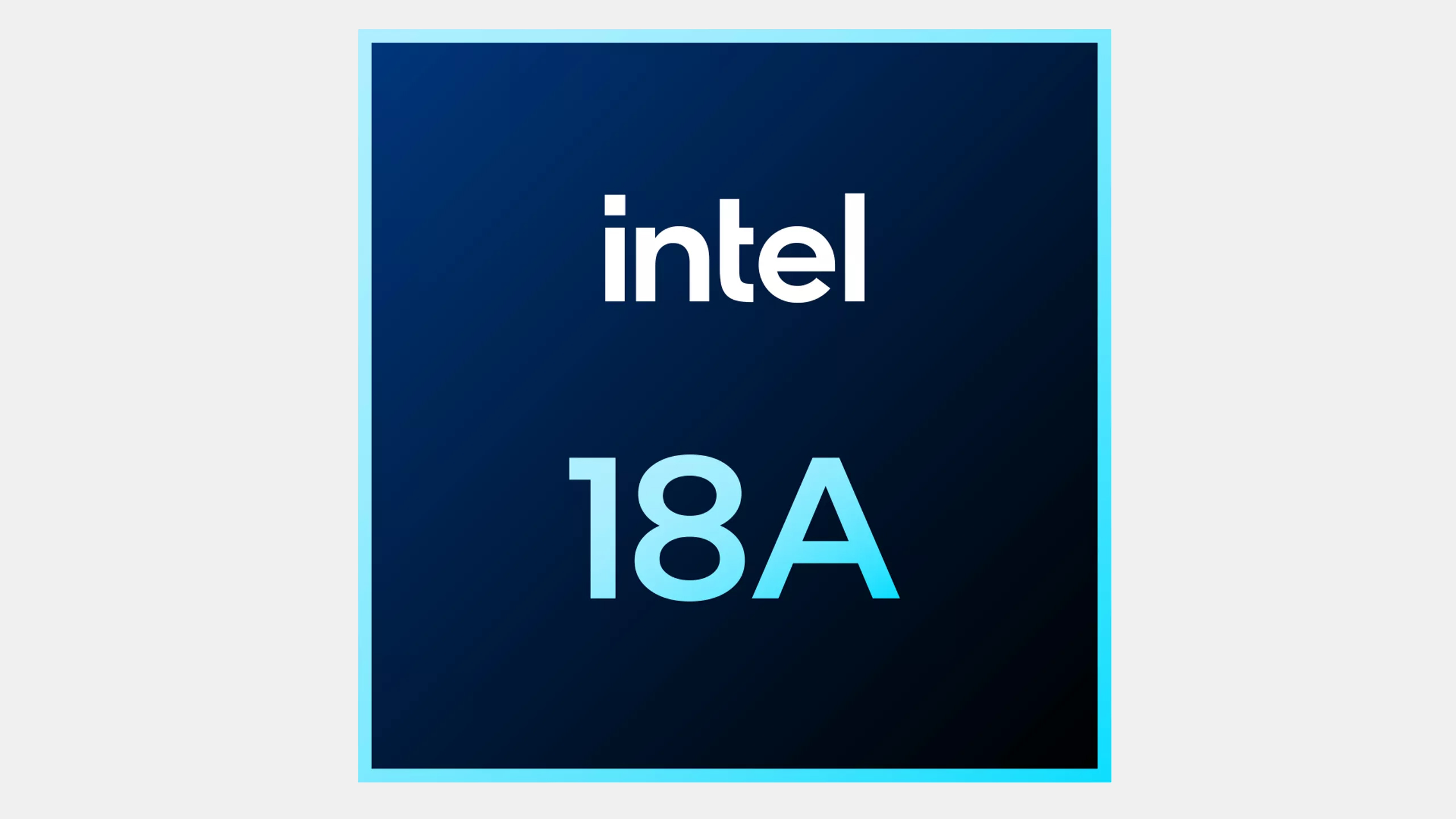Intel launches new 18A website, highlights milestones and specifications
Perhaps is is a PR exercise to appease investors, customers, and politicians.

Intel has launched a special website dedicated to its Intel 18A (1.8nm-class) process technology. Launching such a website is uncommon for Intel, especially given that it merely covers the previously-announced milestones, but considering the fact that the company is under severe pressure from investors, market observers, clients, rivals, and even politicians, launching a new website may not be a bad idea after all.
Intel's 18A fabrication technology is the company's first commercial manufacturing process to rely on gate-all-around RibbonFET transistors as well as a backside power delivery network called PowerVia (something that its closest rival TSMC N2 misses). The new production node will also be the company's first leading-edge process technology that is compatible with industry-standard electronic design automation (EDA) tools as well as IPs from third-party providers and will be available for Intel Foundry external customers. The company pins a lot of hope on this process as it is meant to show that Intel can deliver a leading-edge manufacturing process.
The Intel 18A website indeed points out that the company's 1.8nm-class fabrication technology is not only an Intel development, but a platform that spans across the industry involving EDA tools and IP developers, contract chip designers and design-on-the-cloud providers. The company also reminds that its 18A manufacturing process has been selected by U.S. military and U.S. government for their applications. Considering the fact that Intel only plans to produce its first 18A product — the Panther Lake processor for client PCs — in the middle of the year and expects first tape-ins of third-party 18A products around mid-2025, this is so much the company can do in terms of showing endorsement of the new technology by third parties.
When Intel's fabrication technologies were years ahead of the industry — which was just about a decade ago — Intel would always release details about its next-generation manufacturing technologies together with actual product launches. Just like today, Intel discussed innovative materials and transistor structures in detail, always a source of delight for a technological geek.
Times have changed though, and many believe that Intel will forever remain behind TSMC with no chance to retake pole position. Intel certainly wants to prove naysayers wrong, which is one of the reasons why it launched its website. Another reason is of course to attract more attention to the fabrication process and therefore products that it will power.
Get Tom's Hardware's best news and in-depth reviews, straight to your inbox.

Anton Shilov is a contributing writer at Tom’s Hardware. Over the past couple of decades, he has covered everything from CPUs and GPUs to supercomputers and from modern process technologies and latest fab tools to high-tech industry trends.
-
bit_user Reply
Was that not already true of Intel 3? They definitely had announced external customers on Intel 3.The article said:The new production node will also be the company's first leading-edge process technology that is compatible with industry-standard electronic design automation (EDA) tools as well as IPs from third-party providers and will be available for Intel Foundry external customers.
No, the distinction you're missing is that they didn't have a foundry business, back then. When you do contract manufacturing, the manufacturing process becomes a product in its own right. This is why TSMC and Samsung publish their process roadmaps & updates: in order to attract customers. A part of it is investor relations, but it's mainly about pitching their technology in a bid to win new manufacturing contracts.The article said:When Intel's fabrication technologies were years ahead of the industry — which was just about a decade ago — Intel would always release details about its next-generation manufacturing technologies together with actual product launches. -
bit_user Reply
They have to. It's make-or-break, for them. If 18A is a dud or simply fails to attract enough customers, there might not be another chance for them to prove that IFS can be a viable TSMC competitor.usertests said:LOl they are betting the farm on their N2 competitor. -
Alvar "Miles" Udell Even if the tech is superior, they're going to have to show they're both as reliable as TSMC as well as have the capacity to fill orders as fast as TSMC.Reply -
jheithaus They also have to be more reasonable when you call IFS. The pricing can’t be 2-3x TSMC.Reply -
paviko Why so much pressure to serve other customers? Intel is producing so many it's own CPU the capacity for 18A will not be enough for themselves?Reply
We also need to remember that TSMC 2 will be exclusive almost for 2 years for Apple. Who is now using "old" TSMC 3 - only Apple and Intel? Intel will have 2 years after introduction of TSMC 2 to catch up. 18A needs only to be as good as TSMC 3. -
bit_user Reply
Semiconductor R&D and fab buildout costs have outstripped what Intel can bankroll from its own products. They need more volume, or else they'd have to get out of the manufacturing business altogether.paviko said:Why so much pressure to serve other customers? Intel is producing so many it's own CPU the capacity for 18A will not be enough for themselves?
Source?paviko said:We also need to remember that TSMC 2 will be exclusive almost for 2 years for Apple.
AMD is using it for Zen 5C chiplets, since last year. I'm not sure who else is using it, but I'm sure they have other customers. Qualcomm is going to use their N3P node:paviko said:Who is now using "old" TSMC 3 - only Apple and Intel?
https://www.notebookcheck.net/TSMC-wins-exclusive-Snapdragon-8-Elite-2-contract-as-Samsung-loses-ground.938739.0.html -
phead128 They sent engineering samples to dozens of potential customers over 6 months ago. This website is mostly for PR.Reply -
Gururu For the life of me could not find the link. HereThey will have or put up (and by that I mean knock our socks off) or shut upReply -
thestryker Reply
Intel's own products will likely fill up most of the initial capacity, but they're bringing an entire fab online in AZ for 18A. I don't think it's possible to overstate how much damage the delay in acquiring EUV machines and problems with 10nm cost Intel.paviko said:Why so much pressure to serve other customers? Intel is producing so many it's own CPU the capacity for 18A will not be enough for themselves?
The IFS pivot was a smart reaction not only to the cost of new nodes, but it allows Intel to shift the way they do fabs. In the past they would retire old nodes as a way to maximize fab efficiency. This way they weren't constantly building fabs and/or having idle fabs. As we've seen with TSMC there's a lot of benefit to having multiple EUV nodes available since this allows for more optimal cost/benefit node choices.
Intel's fab expansion if executed correctly (as we'll find out by the end of the year) should allow them to open up 18A and then later 3 while developing more advanced versions of their nodes. This is also what should allow them to pay for the High-NA gamble and move forward to 14A.
Apple has not actually bought the first run of N2 unlike prior generations. I don't think anyone knows what their exact strategy is this time, but seeing as they bought the entire first wafer runs of N7/5/3 it's a pretty big shift.paviko said:We also need to remember that TSMC 2 will be exclusive almost for 2 years for Apple.
This is a very bad take. If 18A with GAAFET and BSPDN is only as good as any of the N3 nodes then Intel will have failed. 18A absolutely has to compete with/be better than N2 in at the very least high performance. They have to be delivering something that nobody else can to get the big contracts that they need.paviko said:Intel will have 2 years after introduction of TSMC 2 to catch up. 18A needs only to be as good as TSMC 3.